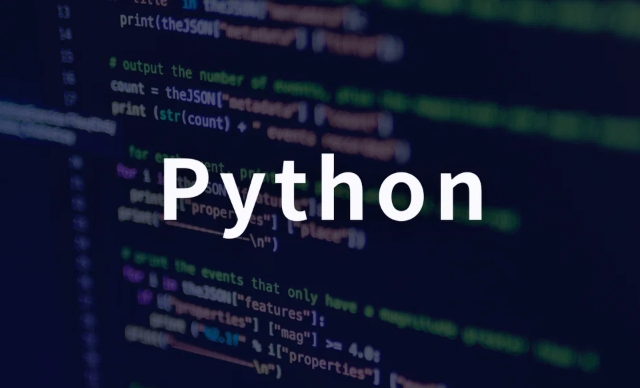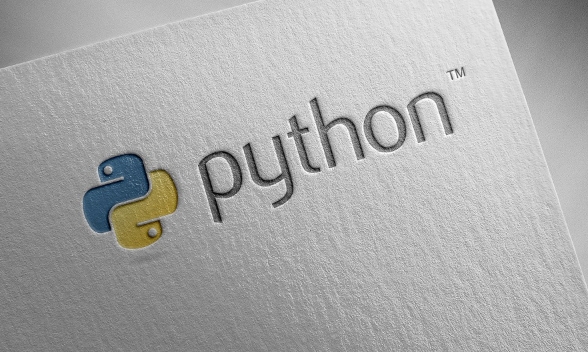The methods of debugging Python code mainly include: 1. Use pdb for command line debugging; 2. Use the graphical debugging function of the IDE; 3. Record logs through the logging module; 4. Use third-party debugging tools. pdb is a debugger built into Python. You can insert pdb.set_trace() into the code or start it through the command line to perform single-step execution, view variables, etc.; IDEs such as PyCharm and VS Code provide graphical interface debugging functions such as breakpoints and monitoring expressions, which are suitable for complex logic problems; the logging module can replace print output, support multi-level control and diversified output targets, which are convenient for log management at different stages; third-party tools such as ipdb, Py-Spy, and cProfile enhance the interactive experience and performance analysis capabilities, and can be flexibly selected according to specific needs. Mastering these methods can help to efficiently locate and solve problems.

Debugging Python code is an inevitable part of the development process, especially after the project complexity increases, it is difficult to quickly locate problems by relying on print output alone. Fortunately, there are many practical debugging tools and methods in the Python ecosystem that can help you find out where the bug is more efficient.

Use pdb: Python's own debugger
pdb is a debugging tool in the Python standard library. It is very convenient to use and does not require additional installation. You just need to insert import pdb; pdb.set_trace() into the code, and the program will be paused when it runs here and enters interactive debugging mode.

In this mode, you can:
- View the current variable value
- Step-by-step (using n)
- Jump into the function (using s)
- View the call stack (using w)
Although inserting set_trace() when writing code is the most direct way, debugging can also be enabled through command line startup, such as python -m pdb script.py , which is more suitable for debugging at the entire script level.

Utilize the graphical debugging function of the IDE
For many people, debugging with the IDE graphical interface will be more intuitive. PyCharm and VS Code all provide complete debugging support.
Taking VS Code as an example, after configuring the launch.json file, you can break points in the code, view variables, execute them in a single step, and even do advanced operations such as conditional breakpoints and monitoring expressions.
These features are particularly suitable for dealing with complex logical errors or state dependencies. If you are working in a team collaboration environment, the debugging capabilities of the IDE are also easier to share and reproduce problems.
Logging: A more reliable way than print
Sometimes we want to understand the overall process of the program running, but we don’t want to interrupt the execution process. The logging module comes in handy at this time.
Compared with print, logging can set different log levels (debug, info, warning, error, critical), and can flexibly control the output format and target (console, file, remote server, etc.).
A common practice is:
- Set the development stage to DEBUG level, output detailed information
- Switch to INFO or WARNING after going online to avoid excessive logs affecting performance
For example:
import logging logging.basicConfig(level=logging.DEBUG) logging.debug('This is a debugging message')
This will not only retain debugging information, but will not mess up the output.
Third-party debugging tools: the choice of enhanced capabilities
In addition to built-in tools, there are also some third-party libraries that can help you debug better. for example:
- ipdb : Combined with IPython, it provides a more friendly debugging experience, supports automatic completion and syntax highlighting
- Py-Spy : used to analyze performance bottlenecks of Python programs, suitable for troubleshooting CPU and memory problems
- vspyder : Visual debugging plug-in, suitable for data display in specific scenarios
These tools can be selected and used according to specific needs. For example, if you want to see how much time a certain function takes, it is very appropriate to use cProfile snakeviz.
Basically these commonly used methods. Different tool combinations can be selected in different situations. The key is to master the basic ideas: observe the state, narrow the scope, and verify the hypothesis.
The above is the detailed content of Debugging Python Code Effectively with Tools. For more information, please follow other related articles on the PHP Chinese website!

Hot AI Tools

Undress AI Tool
Undress images for free

Undresser.AI Undress
AI-powered app for creating realistic nude photos

AI Clothes Remover
Online AI tool for removing clothes from photos.

Clothoff.io
AI clothes remover

Video Face Swap
Swap faces in any video effortlessly with our completely free AI face swap tool!

Hot Article

Hot Tools

Notepad++7.3.1
Easy-to-use and free code editor

SublimeText3 Chinese version
Chinese version, very easy to use

Zend Studio 13.0.1
Powerful PHP integrated development environment

Dreamweaver CS6
Visual web development tools

SublimeText3 Mac version
God-level code editing software (SublimeText3)

Hot Topics
 Polymorphism in python classes
Jul 05, 2025 am 02:58 AM
Polymorphism in python classes
Jul 05, 2025 am 02:58 AM
Polymorphism is a core concept in Python object-oriented programming, referring to "one interface, multiple implementations", allowing for unified processing of different types of objects. 1. Polymorphism is implemented through method rewriting. Subclasses can redefine parent class methods. For example, the spoke() method of Animal class has different implementations in Dog and Cat subclasses. 2. The practical uses of polymorphism include simplifying the code structure and enhancing scalability, such as calling the draw() method uniformly in the graphical drawing program, or handling the common behavior of different characters in game development. 3. Python implementation polymorphism needs to satisfy: the parent class defines a method, and the child class overrides the method, but does not require inheritance of the same parent class. As long as the object implements the same method, this is called the "duck type". 4. Things to note include the maintenance
 Python Function Arguments and Parameters
Jul 04, 2025 am 03:26 AM
Python Function Arguments and Parameters
Jul 04, 2025 am 03:26 AM
Parameters are placeholders when defining a function, while arguments are specific values ??passed in when calling. 1. Position parameters need to be passed in order, and incorrect order will lead to errors in the result; 2. Keyword parameters are specified by parameter names, which can change the order and improve readability; 3. Default parameter values ??are assigned when defined to avoid duplicate code, but variable objects should be avoided as default values; 4. args and *kwargs can handle uncertain number of parameters and are suitable for general interfaces or decorators, but should be used with caution to maintain readability.
 Explain Python generators and iterators.
Jul 05, 2025 am 02:55 AM
Explain Python generators and iterators.
Jul 05, 2025 am 02:55 AM
Iterators are objects that implement __iter__() and __next__() methods. The generator is a simplified version of iterators, which automatically implement these methods through the yield keyword. 1. The iterator returns an element every time he calls next() and throws a StopIteration exception when there are no more elements. 2. The generator uses function definition to generate data on demand, saving memory and supporting infinite sequences. 3. Use iterators when processing existing sets, use a generator when dynamically generating big data or lazy evaluation, such as loading line by line when reading large files. Note: Iterable objects such as lists are not iterators. They need to be recreated after the iterator reaches its end, and the generator can only traverse it once.
 Python `@classmethod` decorator explained
Jul 04, 2025 am 03:26 AM
Python `@classmethod` decorator explained
Jul 04, 2025 am 03:26 AM
A class method is a method defined in Python through the @classmethod decorator. Its first parameter is the class itself (cls), which is used to access or modify the class state. It can be called through a class or instance, which affects the entire class rather than a specific instance; for example, in the Person class, the show_count() method counts the number of objects created; when defining a class method, you need to use the @classmethod decorator and name the first parameter cls, such as the change_var(new_value) method to modify class variables; the class method is different from the instance method (self parameter) and static method (no automatic parameters), and is suitable for factory methods, alternative constructors, and management of class variables. Common uses include:
 How to handle API authentication in Python
Jul 13, 2025 am 02:22 AM
How to handle API authentication in Python
Jul 13, 2025 am 02:22 AM
The key to dealing with API authentication is to understand and use the authentication method correctly. 1. APIKey is the simplest authentication method, usually placed in the request header or URL parameters; 2. BasicAuth uses username and password for Base64 encoding transmission, which is suitable for internal systems; 3. OAuth2 needs to obtain the token first through client_id and client_secret, and then bring the BearerToken in the request header; 4. In order to deal with the token expiration, the token management class can be encapsulated and automatically refreshed the token; in short, selecting the appropriate method according to the document and safely storing the key information is the key.
 What are Python magic methods or dunder methods?
Jul 04, 2025 am 03:20 AM
What are Python magic methods or dunder methods?
Jul 04, 2025 am 03:20 AM
Python's magicmethods (or dunder methods) are special methods used to define the behavior of objects, which start and end with a double underscore. 1. They enable objects to respond to built-in operations, such as addition, comparison, string representation, etc.; 2. Common use cases include object initialization and representation (__init__, __repr__, __str__), arithmetic operations (__add__, __sub__, __mul__) and comparison operations (__eq__, ___lt__); 3. When using it, make sure that their behavior meets expectations. For example, __repr__ should return expressions of refactorable objects, and arithmetic methods should return new instances; 4. Overuse or confusing things should be avoided.
 How does Python memory management work?
Jul 04, 2025 am 03:26 AM
How does Python memory management work?
Jul 04, 2025 am 03:26 AM
Pythonmanagesmemoryautomaticallyusingreferencecountingandagarbagecollector.Referencecountingtrackshowmanyvariablesrefertoanobject,andwhenthecountreacheszero,thememoryisfreed.However,itcannothandlecircularreferences,wheretwoobjectsrefertoeachotherbuta
 Describe Python garbage collection in Python.
Jul 03, 2025 am 02:07 AM
Describe Python garbage collection in Python.
Jul 03, 2025 am 02:07 AM
Python's garbage collection mechanism automatically manages memory through reference counting and periodic garbage collection. Its core method is reference counting, which immediately releases memory when the number of references of an object is zero; but it cannot handle circular references, so a garbage collection module (gc) is introduced to detect and clean the loop. Garbage collection is usually triggered when the reference count decreases during program operation, the allocation and release difference exceeds the threshold, or when gc.collect() is called manually. Users can turn off automatic recycling through gc.disable(), manually execute gc.collect(), and adjust thresholds to achieve control through gc.set_threshold(). Not all objects participate in loop recycling. If objects that do not contain references are processed by reference counting, it is built-in






